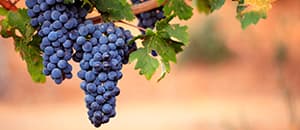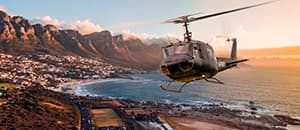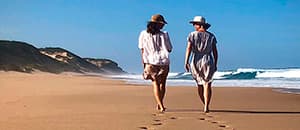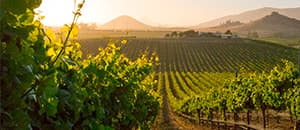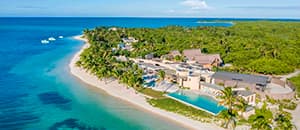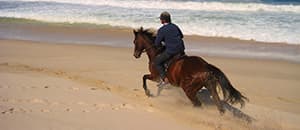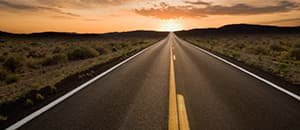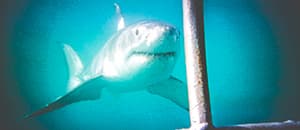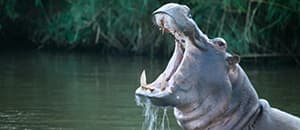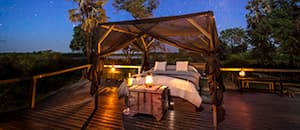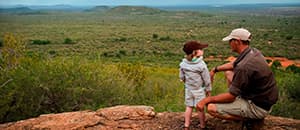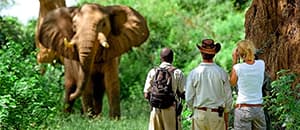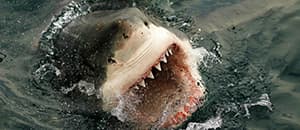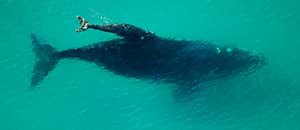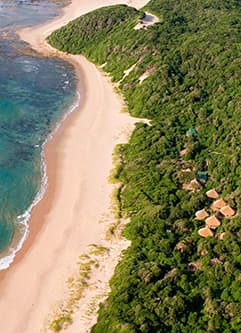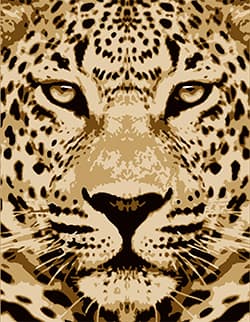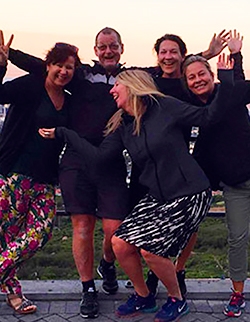A more classic safari destination is hard to find. After years of domestic problems, we are happy to announce that Zimbabwe is back on the safari map. Enjoy spectacular scenery with strikingly rich wildlife in the heart of Africa
HIGHLIGHTS OF ZIMBABWE
Experience world-class safari while fishing tigerfish in Mana Pool National Park
Enjoy one of the world’s most famous and spectacular waterfalls, Victoria Falls
Join a walking safari in one of the world’s most classic safari areas, Hwange National Park
Combine your South Africa trip with an unforgettable few days stay in Zimbabwe. With Mana Pools as a starting point, canoe on the Zambezi River among hippopotamus and crocodiles, observed by majestic elephants and proud African buffalos from the river bank. End or start the journey with a visit to the mighty and spectacular Victoria Falls – one of the world’s greatest waterfalls.
Victoria Falls
Victoria Falls is one of the world’s mightiest waterfalls, located in the Zambezi River on the border between Zimbabwe and Zambia. The spectacular falls are about 1.6 km wide and 108 meters on its highest point. Victoria Falls was discovered in 1855 by the Scottish missionary David Livingstone, who heard rumours from the local tribes about some “the thundering smoke”. Mr Livingstone named the Victoria Falls after Britain’s then Queen Victoria and wrote history as the first European to witness these mighty falls. The border between Zimbabwe and Zambia runs in the middle of the waterfall, which means that the western part is in Zimbabwe and the eastern part in Zambia. Victoria Falls got UNESCO World Heritage List status in 1989 and today the falls are one of Africa’s most visited sights.
Lake Kariba
Lake Kariba is a large artificial lake that is part of the Zambezi River on the border between Zimbabwe and Zamiba. Lake Kariba was formed with the creation of the Kariba Dam, which is a dam for a power station that was put into use in 1960. Kariba is known for its rich wildlife and this is because they burned the vegetation before filling the lake with water. Lake Kariba is 97 meters deep, over 280 km long and up to 40 kilometers wide. There are several islands, including Chete Island, Sekula and Chikanka. A popular and unforgettable holiday activity is to rent a boat from one of the ports and travel on the lake among wild animals. From your boat you can make small detours with a zodiac and, among other things, catch a tiger fish.
Mana Pools National Park
Mana Pools National Park is located in a large wetland area in northwestern Zimbabwe. The 2500 km² river basin, islands, sandbanks and ponds, flanked by mahogany forests, wild fig trees, ebony trees and baobabs, is one of the last developed national parks in southern Africa. The national park has the country’s largest concentration of hippos and crocodiles as well as large populations of elephants and buffaloes during the dry season. In 1984, the national park was added to the UNESCO World Heritage List. Mana means “four” on Shona, as a reference to the four large permanent water ponds formed by meanders in central Zambezi.
Hwange National Park
Hwange National Park is one of Africa’s premier national parks and the largest national park in Zimbabwe. In terms of size, the park is as large as Belgium. Located in the western part of the country, at the foot of the Kalahari, a few hours drive from Victoria Falls. The park covers just over 14,000 km² and has the largest diversity of mammals of all the world’s national parks and is home to about 50,000 elephants. The park is known for its frequent sightings of cheetahs, leopards and lions, as well as one of Africa’s largest populations of endangered wild dogs. Here are also the rare horse and saber antelopes and about 400 bird species.
Gonarezhou National Park
Gonarezhou National Park is a 5053 km² game reserve in Masvingo Province in southeastern Zimbabwe and is the country’s second largest national park after Hwange. The park consists of a low veldland, which is divided into an area around the rivers Save and Runde in the northeast and an area by the river Mwenezi in the southwest. Gonarezhou is part of the Great Limpopo Transfrontier Park. The national park is known for its many elephants.
Malilangwe Wildlife Reserve
Malilangwe Wildlife Reserve is a private reserve, 130,000 hectares in southeastern Zimbabwe, about 200 km from the South African border. The reserve offers a rich wildlife, a large concentration of both white and black rhinos, including rare and endangered species including saber antelope. Malilangwe is known for its mopane forests and majestic baobab trees, and is an area where over 100 ancient rock carvings have been discovered dating back more than 2000 years. Malilangwe, which means “call of the leopard”, is also home to the Big 5. The activities offered in the reserve are, in addition to safaris, walking safari and fishing on the lake.
Contact Upplev Sydafrika for more information about travel to Zimbabwe.

You can travel to Zimbabwe all year round

Healthcare is limited in Zimbabwe. We suggest obtaining a sound travel insurance before departure

Apply for a Univisa (KAZA-visa) valid for 30 days when entering both Zimbabwe and Zambia

To reflect on when considering Zimbabwe as a destination
The high season from June to November is very popular. This means that you need to book your safari experience well in advance.






